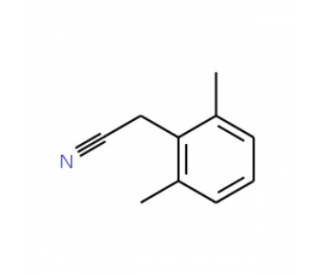详细说明
Species Reactivity
Human
Specificity
Detects human Growth Hormone (GH) in direct ELISAs and Western blots. In direct ELISAs, no cross-reactivity with recombinant rat GH is observed.
Source
Monoclonal Mouse IgG 2B Clone # 178902
Purification
Protein A or G purified from hybridoma culture supernatant
Immunogen
E. coli-derived recombinant human Growth Hormone
Phe27-Phe217
Accession # CAA23779Formulation
Lyophilized from a 0.2 μm filtered solution in PBS with Trehalose. *Small pack size (SP) is supplied as a 0.2 µm filtered solution in PBS.
Endotoxin Level
<0.10 EU per 1 μg of the antibody by the LAL method.
Label
Unconjugated
Applications
Recommended
ConcentrationSample
Western Blot
2 µg/mL
See below
Neutralization
Measured by its ability to neutralize Growth Hormone-induced proliferation in the Nb2‑11 rat lymphoma cell line. Bozzola, M. et al. (1998) J. Endocrinol. Invest. 21:65. The Neutralization Dose (ND 50) is typically 2-8 µg/mL in the presence of 0.2 ng/mL Recombinant Human Growth Hormone.
Please Note: Optimal dilutions should be determined by each laboratory for each application. are available in the Technical Information section on our website.
Data Examples
Western Blot | Detection of Human Growth Hormone by Western Blot. Western blot shows lysates of human pituitary gland tissue. PVDF membrane was probed with 2 µg/mL of Mouse Anti-Human Growth Hormone Monoclonal Antibody (Catalog # MAB1067) followed by HRP-conjugated Anti-Mouse IgG Secondary Antibody (Catalog # ). A specific band was detected for Growth Hormone at approximately 22 kDa (as indicated). This experiment was conducted under reducing conditions and using . |
Neutralization | Cell Proliferation Induced by Growth Hormone and Neutralization by Human Growth Hormone Antibody. Recombinant Human Growth Hormone (Catalog # ) stimulates proliferation in the Nb2‑11 rat lymphoma cell line in a dose-dependent manner (orange line). Proliferation elicited by Recombinant Human Growth Hormone (0.2 ng/mL) is neutralized (green line) by increasing concentrations of Mouse Anti-Human Growth Hormone Monoclonal Antibody (Catalog # MAB1067). The ND50 is typically 2-8 µg/mL. |
Preparation and Storage
Reconstitution
Reconstitute at 0.5 mg/mL in sterile PBS.
Shipping
The product is shipped at ambient temperature. Upon receipt, store it immediately at the temperature recommended below. *Small pack size (SP) is shipped with polar packs. Upon receipt, store it immediately at -20 to -70 °C
Stability & Storage
Use a manual defrost freezer and avoid repeated freeze-thaw cycles.
12 months from date of receipt, -20 to -70 °C as supplied.
1 month, 2 to 8 °C under sterile conditions after reconstitution.
6 months, -20 to -70 °C under sterile conditions after reconstitution.
Background: Growth Hormone
Growth hormone (GH), also known as somatotropin, is a member of a family of growth factors that includes prolactin, placental lactogens, proliferins, and somatolactin (1, 2). It is synthesized primarily by somatotropes in the anterior pituitary and is stored in secretary granules. The pulsatile release of GH into circulation is regulated by the concerted actions of the hypothalamic hormones, GH-releasing hormone (GHRH) and somatostatin (SST), as well as by signals from the periphery, ghrelin (3) and leptin (4). The human GH cDNA encodes a 217 amino acid (aa) precursor protein with a 26 aa putative signal peptide. By alternative splicing, at least four isoforms of GH have been identified (5). Human GH is a pleiotropic cytokine that exerts its biological actions by binding to the transmembrane GH receptor, which is present in many cell types (1, 2). GH stimulates the liver and other tissues to produce IGF-I, which regulates growth and metabolism. GH has also been shown to have direct effects on growth that is independent of IGF-I. GH, directly or indirectly via IGF-I, can act on B cells, T cells, NK cells, macrophages, and neutrophils to exert immunomodulatory activities (6). In addition, GH can act directly on various cell types to induce lipolysis, lactation, amino acid uptake, and protein synthesis (1, 2, 6).
References:
Goffin, V. et al. (1996) Endocrine Rev. 17:385.
Le Roith, D. et al. (2001) Endocrine Rev. 22:53.
Kojima, K. et al. (1999) Nature 402:656.
Tannenbaum, G. et al. (1998) Endocrinol. 139:3871.
Welniak, L.A. et al. (2002) J. Leukoc. Biol. 71:381.
Entrez Gene IDs:
2688 (Human)
Alternate Names:
GH1; GHIGHD1B; GHNGrowth hormone; GH-Nsomatotropin; growth hormone 1Pituitary growth hormone; Growth Hormone; hGH-N; Somatotropin











 粤公网安备44196802000105号
粤公网安备44196802000105号